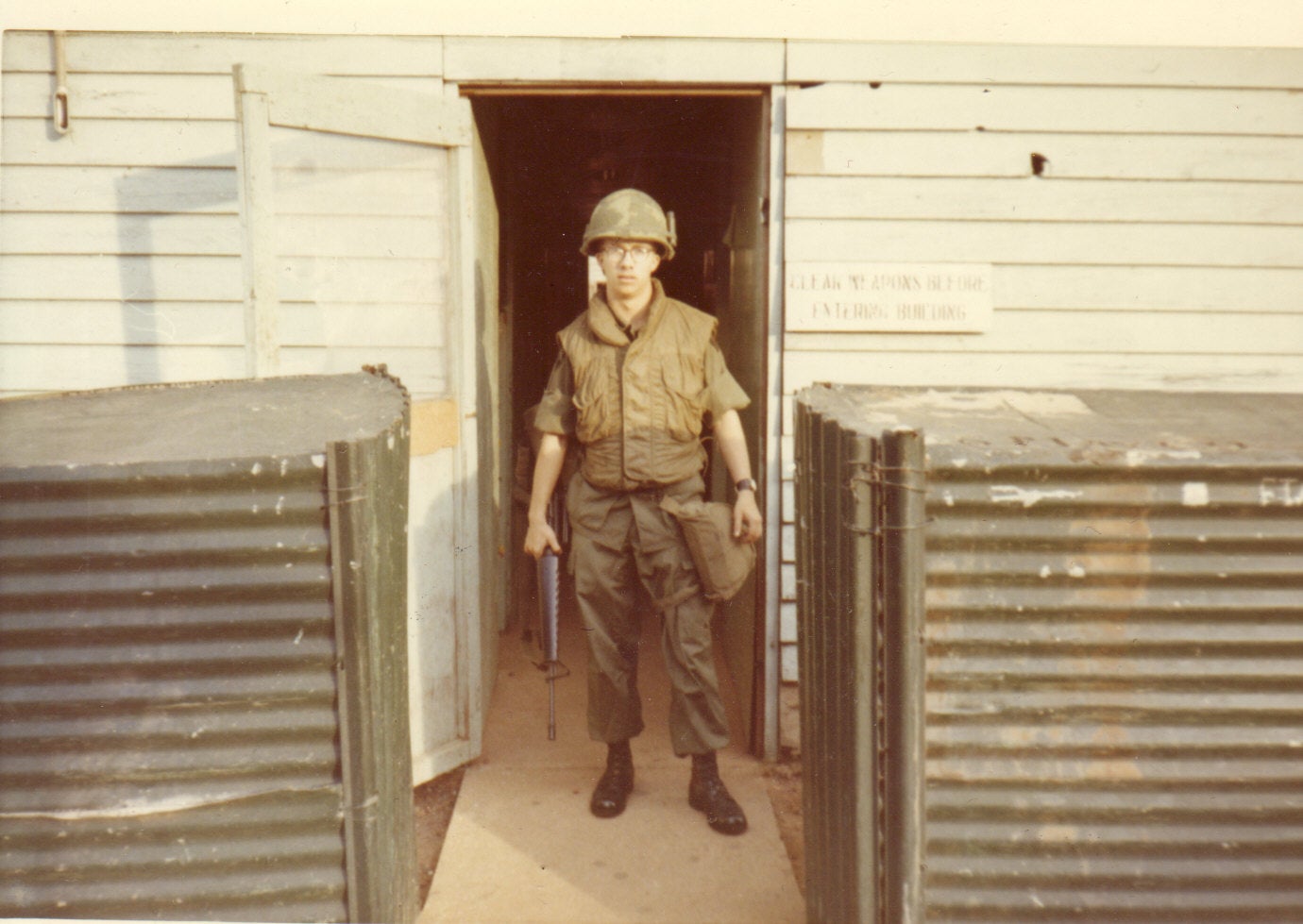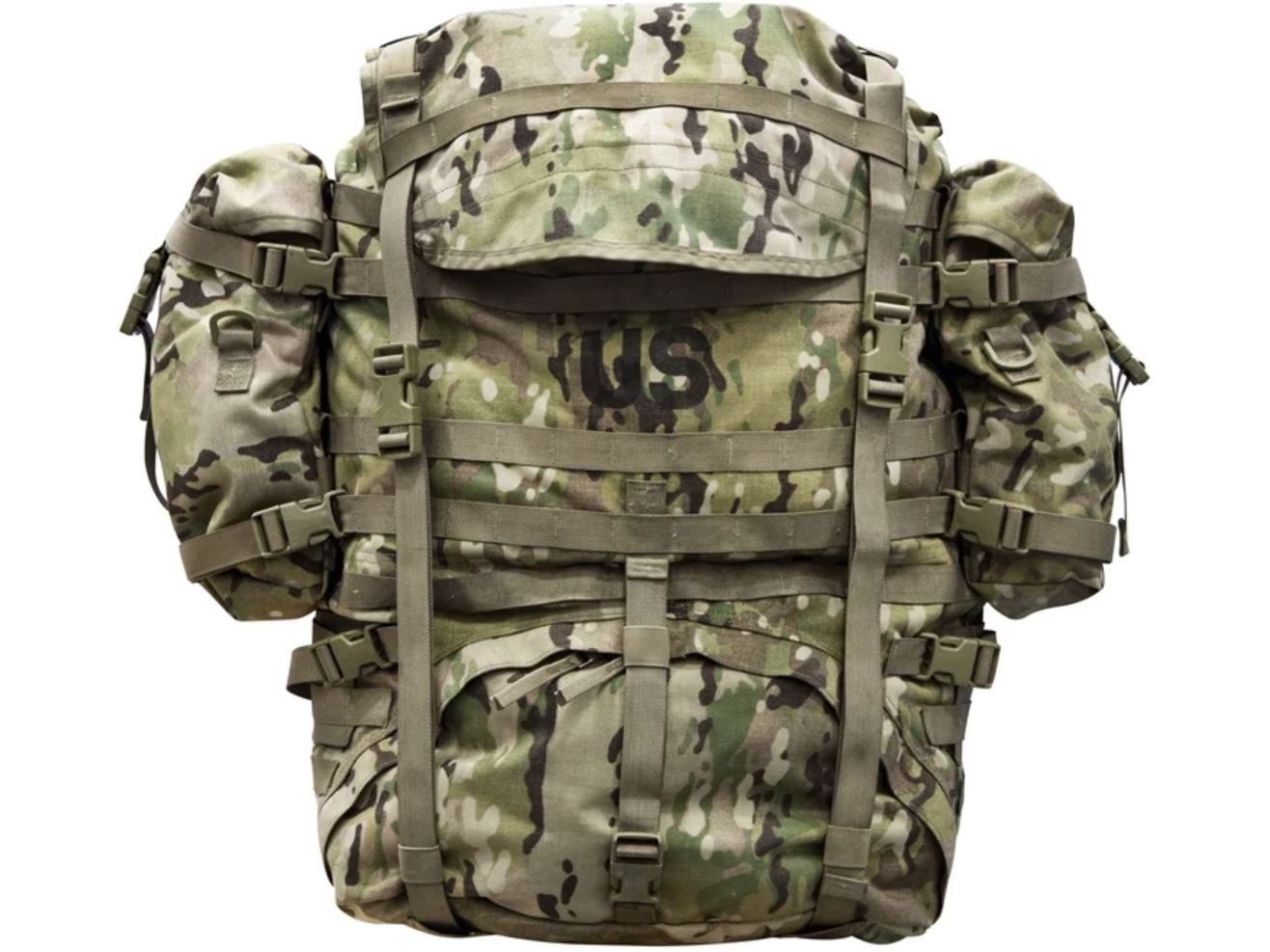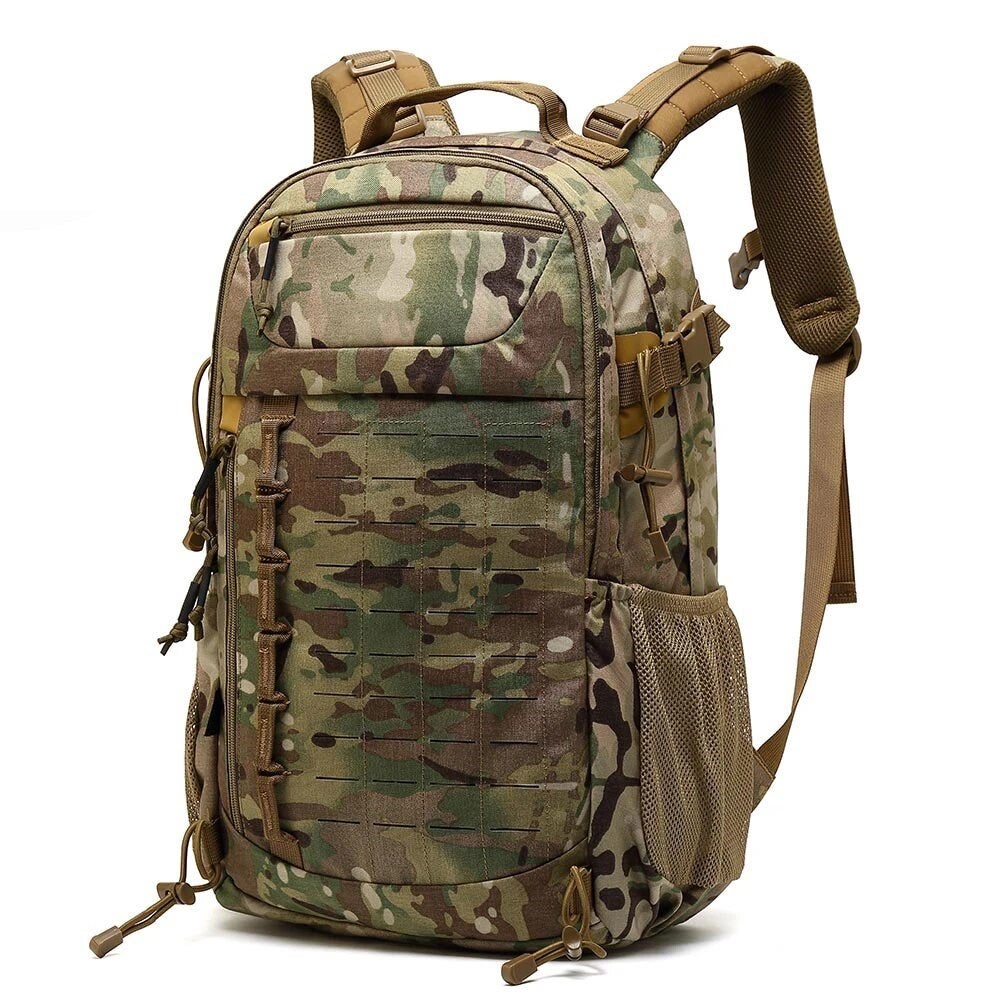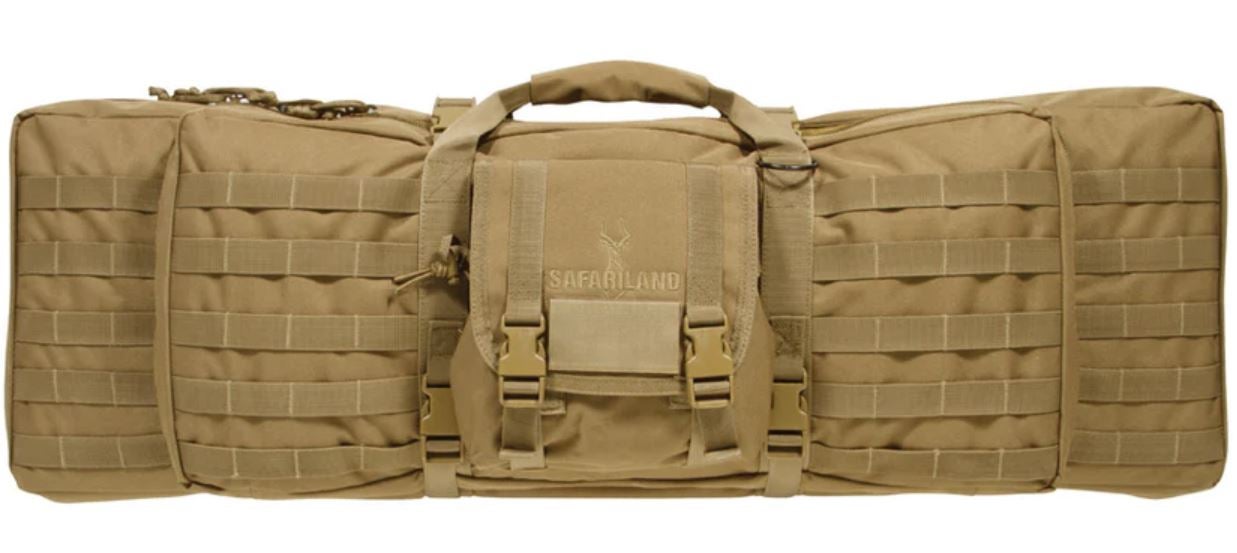Ballistic Nylon – What It Is, Its History, and Why I Need It
Travis Olander 05.08.23

Nearly every range bag, tactical backpack, plate carrier, and soft gun case worth buying is typically advertised as being fabricated from a rugged, do-it-all material called ballistic nylon. Sometimes it’s called “Cordura” or “ripstop”. But what are these materials? Having a deeper understanding of the gear you trust is what separates a professional shooter from the amateurs, so today, we’re taking an in-depth look at tactical gear’s favorite fabric: Ballistic nylon. What is it? How’s it rated? Why is it so good? Let’s find out.
Ballistic Nylon: A Quick History
This image, that of a typical G.I. deployed in Vietnam, illustrates one of the first modern uses of ballistic nylon. Ballistic protection was nothing new the mid-20th century. Examples of hard armor made to deflect projectiles can be found in history as early as the 16th century. But it wasn’t until the 19th century that Japanese manufacturers made the first “soft armor” using woven silk. While silk armor could manage well enough against the ball rounds and black powder of the time, it would quickly be made obsolete, thanks to the invention of gunpowder and modern bullets.
Enter Synthetic Threads
After President McKinley was assassinated in 1901, the U.S. Military began exploring this new method of bulletproofing one’s self with soft material. But expensive silk wouldn’t cut it against the new, high-velocity rounds employed by most armies of the time. Development of a soft body armor required using a then-new and cutting-edge material: Nylon. Developed by American chemist Wallace Carothers in 1935, this synthetic weave was already being used to create more reliable parachutes for paratroopers. DuPont refined the production, creating a new type of fabric that had been engineered to provide incredible resistance to abrasion. It could also withstand cutting and tearing forces from high-velocity impacts.
This new, ballistic material was employed to protect aircraft personnel bombing German forces from the deadly flak and airborne fragmentation they would suffer over enemy territory. This protective flak jacket marks the first official deployment of ballistic nylon. By the Vietnam war, the U.S. military had fully embraced the stuff: All issued gear was made from it, including rucksacks, helmet covers, bags, belts, weaved kit, and the first plate carriers.
What Makes Nylon “Ballistic?”
Fast-forward today, and you see nylon and its counterpart, Cordura, being used in a plethora of civilian and law enforcement tactical gear, range bags, and gun cases. While regular nylon is a popular material for other, less “militaristic” products, including typical clothing, ballistic nylon meets certain specifications and it must be fabricated and woven in a certain way to provide the necessary level of performance you’re looking for in tactical kit.
Denier Ratings Explained
Shop for any range bag or other tactical gear made of ballistic nylon, and you’ll often find a number (“600D”, for example) listed. Denier is the unit of measure which describes the thickness of a fabric’s individual strands. Thickness doesn’t directly translate into strength; the weave pattern is just as important when considering overall ruggedness, but we’ll touch on that next. Take a close look at the image below, and you’ll see the difference in material thickness.
The ballistic nylon weaves shown above are noticeably thicker within each overlapping strand. This makes the fabric less flexible (which may be beneficial for tactical gear like a gun case), but it greatly enhances its ability to withstand cuts, tearing, and abrasion. Softer, standard nylon canvas (shown right) is more flexible and less robust, making it better suited for light-duty gear or as a general-purpose fabric.
Denier ratings are universal. That means a cotton fabric with a 600D rating will have the same thickness as nylon. For reference, most standard fabrics used in clothing and bedding are 40D to 80D. Heavy duck canvas — often found on older military gear and tents — can range between 100D and 600D. Most range gear and bags made of ballistic nylon sport a denier rating of 400D or higher.
Ballistic Nylon: Official Military Specifications
The original military specification for ballistic nylon requires that it measure 1,050D in thickness, with a 2×2 basket weave structure (explained below). MIL-C-12369F also lists the endless military requirements for this fabric, not discussed here. Today, however, advances in nylon production have shown that ballistic fabric measuring 400D to 600D still provides excellent performance while also remaining water-resistant.
Ballistic vs. Standard Weave Structure
Denier ratings and thickness are just half the equation when it comes to figuring out why ballistic nylon is so tough. The construction and layering of the individual strands is just as important.
The overlapping weave is what truly provides ballistic nylon with its strength. By doubling up the perpendicular strands, this weave offers excellent resistance to wear in all directions. The basket weave is nicknamed the “ballistic weave” for this reason — it’s also used to fabricate body armor made from Kevlar and Aramid, two other synthetic fibers.
IMPORTANT NOTE: Not all range gear will be constructed with a ballistic weave, and this does not mean the gear in question is of low quality. Range backpacks, for example, may use a high-denier fiber (1,000D to 1,200D) with a standard 1×1 weave. This is meant to provide a lower cost. The standard weave may also provide better flexibility and comfort where it’s needed most.
Cordura vs. Ballistic Nylon
These two fabrics are often used interchangeably when tactical gear and range bags are created. But it’s important to know that while both Cordura (almost always 1,000D or 1,050D) and ballistic nylon look and feel the same and provide similar performance and strength, they are different. Cordura is made of texturized woven nylon, while ballistic nylon uses filament strands. Filament fabrics comprise numerous individual, smaller strands tightly bound to form one, larger strand. Ballistic nylon thus produces a smoother, slicker material. Cordura has a more rough or “fuzzy” appearance with greater surface area.
- Cordura has a higher abrasion resistance.
- Ballistic nylon has a greater tear resistance.
This doesn’t matter much, though — both materials have such high denier and overall strength ratings that either will typically outperform whatever you put your gear through. Cordura boasts one minor advantage: Its texture makes it much easier to dye or stain. This means that, typically, range gear with some color in the fabric (OD Green, Desert Tan, or Coyote Brown, for example) will be made of Cordura. Ballistic nylon is typically black for the opposite reason (it’s more difficult to dye).
Ripstop Nylon: Overview & Use
Ripstop fabric tends to have a slight “sheen” to them. It’s often lighter and thinner then Cordura or ballistic nylon, and it has a unique square-stitched pattern of another overlapping fabric. Ripstop nylon provides some unique benefits: As the name implies, the extra stitched squares greatly improve the material’s tearing and abrasion resistance without the need for a high denier rating.
Ripstop fabric is most often found in long-range shooting bags and backpacks, as hunters and sportsmen need to count every ounce they’re carrying on those long-mile treks. Bags and packs made of ripstop fabric will typically sport a Denier rating of 400D to 600D, while affording strength and performance which approaches that of a 1,000D-nylon bag constructed with a traditional weave pattern. Because ripstop uses thinner, “slicker” fibers, it’s much less prone to catching sharp objects and fraying or tearing. This is a perfect material for the interior lining of many soft range bags and backpacks where equipment, muzzles, iron sights, ammo, and other pointy bits may take their toll on the fabric.
Fun fact: Ripstop was employed before any other type of ballistic nylon in WWII. Paratroopers’ chutes utilized ripstop fabrics and patterns to make the chutes more flexible and lighter. The reinforced pattern also prevented the chutes from tearing under the extreme stress of opening in mid-air at high velocity during jumps.



